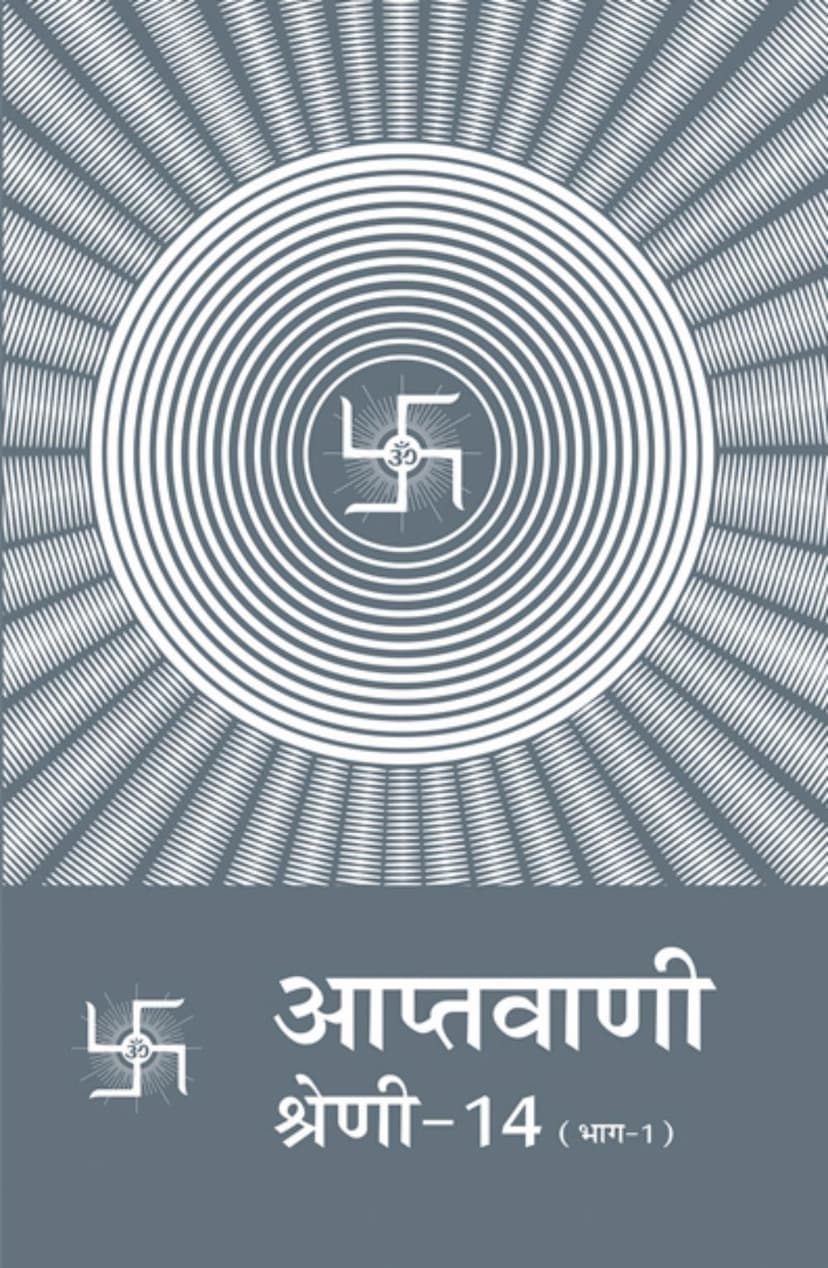Aptavani 14 Part 1 Hindi
Added to library: September 1, 2025

Summary
This document is the first part of the 14th volume of the "Aptavani" series by Dada Bhagwan. The series is based on the teachings of Dada Bhagwan, a spiritual master who, according to the text, attained self-realization in 1958.
The book is published by Dada Bhagwan Aradhana Trust and the first edition was released in November 2018. The introductory pages include devotional chants (Trimantra) and a dedication by Dr. Neeru Ben Amin, who compiled and authored the content.
Core Concepts and Themes:
The primary focus of this volume is to explain the scientific understanding of "Vibhav" (unnatural states or tendencies), "Vishesh Bhaav" (special states or qualities), and "Vyatirek Gun" (adventitious or non-inherent qualities). The text delves into the root cause of the worldly existence and suffering, attributing it not to a divine creator but to the interaction and proximity of fundamental principles, specifically the interaction between the spiritual (Cheta) and material (Jad) elements.
Key Explanations:
- The Origin of the World: The book posits that the universe and worldly existence arise not from a God's will, but from the scientific interaction between the six eternal elements, primarily the proximity of the spiritual (Cheta) and material (Jad) elements. This proximity leads to "Vishesh Bhaav" (special states), which in turn causes the cycle of existence and suffering.
- The "I" and Ego: The text explains the emergence of the concept of "I" (Aham) as the first level of "Vishesh Bhaav." From this "Aham," the second level, "Ahankar" (ego), arises from wrong beliefs. The ego then takes over, leading to further "Vishesh Bhaav" and the cycle of new births and deaths.
- Vibhav vs. Swabhav: "Vibhav" (unnatural state) is explained as contrary to reality and the true nature of things. It arises from external influences and wrong beliefs. In contrast, "Swabhav" (natural state) is the inherent, unchanging nature of the soul.
- Vyatirek Gun: Qualities like anger, pride, deceit, and greed (Krodh-Maan-Maya-Lobh) are identified as "Vyatirek Gun" – adventitious qualities that are not inherent to the soul (Cheta) or the material substance (Jad). They arise from the interaction and proximity of these two principles, particularly from "Aham" (the sense of "I").
- Wrong Beliefs (Mithya Drishti): The text emphasizes that the root cause of suffering is wrong beliefs, especially the belief of "I am Chandubhai" or "I am doing this." When these wrong beliefs are corrected through correct understanding ("Samkit" or Right Belief), liberation from suffering is possible.
- The Nature of the Soul: The soul (Atma) is described as eternal, pure, and unaffected by external circumstances. Its true nature is "Swabhav" (natural state). The suffering arises from the mistaken identification with the "Vibhav" (unnatural states) and the resulting "Vishesh Bhaav" and "Vyatirek Gun."
- Dravya-Gun-Paryay: The second part of the volume delves into the philosophical concepts of "Dravya" (substance), "Gun" (qualities), and "Paryay" (states or modifications). It clarifies that while the "Dravya" and its inherent "Gun" are eternal, the "Paryay" (manifestations or states) are temporary and constantly changing. The goal is to realize the true "Dravya" and its inherent "Gun" (pure consciousness), transcending the temporary "Paryay."
- The Role of Knowledge: The teachings highlight that true knowledge ("Gyan") is essential to distinguish between the eternal "Dravya" and the temporary "Paryay" and "Vibhav." It's through correct knowledge that wrong beliefs are dispelled, and one can return to their true nature.
Key Takeaways:
- The book presents a scientific and logical explanation for the origin of the world and the cycle of birth and death, emphasizing that it's a result of natural laws and interactions, not divine intervention.
- Dada Bhagwan's teachings aim to provide a direct experience of the Self through the "Akram Vignana" (effortless path), which involves understanding these fundamental principles and shedding wrong beliefs.
- The ultimate goal is to realize one's true nature as the pure, eternal soul (Shuddhatma), free from all unnatural states and qualities.
- The text uses analogies and scientific reasoning to explain complex spiritual concepts, making them accessible to the reader.
In essence, "Aptavani 14 Part 1" is a profound exploration of the mechanics of the universe and the human condition from the perspective of Dada Bhagwan's spiritual science, offering a path to liberation through correct understanding and self-realization.